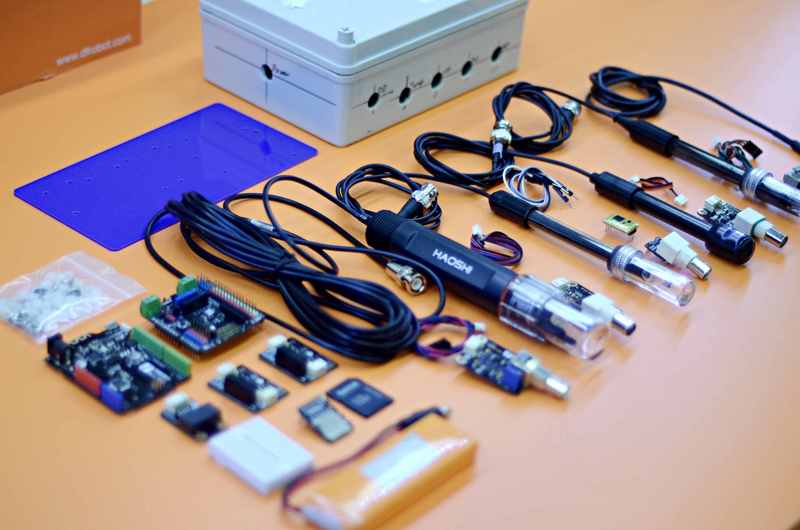Water quality is an interesting and important topic, especially for the Marineterrein (the area where we have our MeetUps). In the past we were asked to help thinking about monitoring the quality of the swimming water in the harbour: This resulted in our earlier Waterbuoy project and an investigation in the relationship between rain and sewer overflow. Currently we work on Mijn Omgeving and Drinkable Rivers .
We have quite some stuff around which you can use to start your own water quality project, for example this kit from DFRobot / Public Lab

When working on our Waterbuoy in the past, we found several sources very informative, especially:
- the Cave Pearl Project
- Basic Observation Buoy (BOB): Educational Water Quality Monitoring
- Fondriest Environmental Learning Center